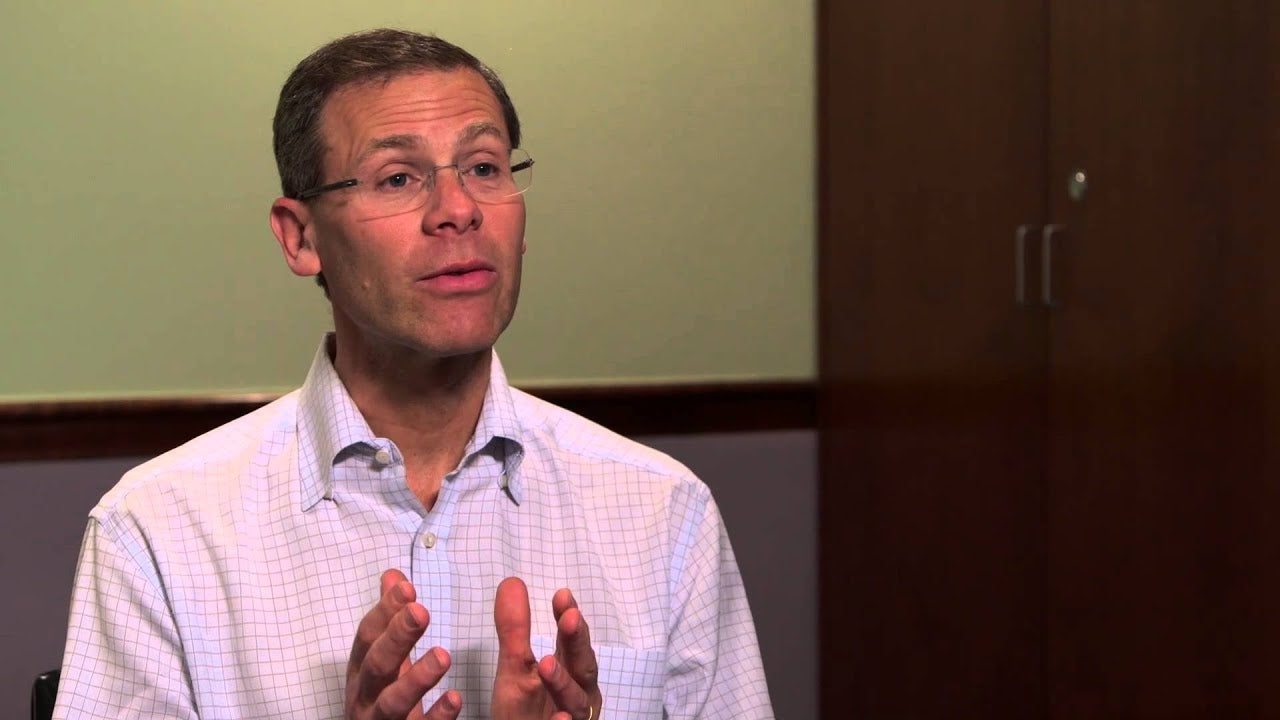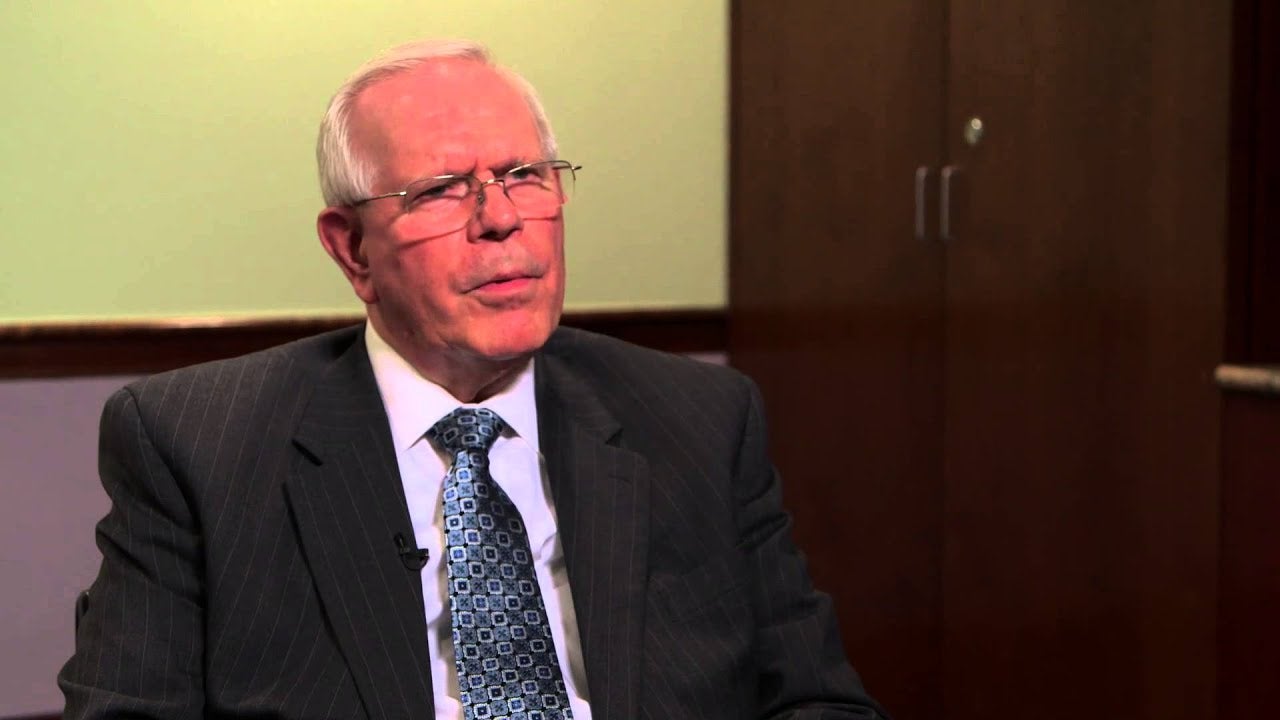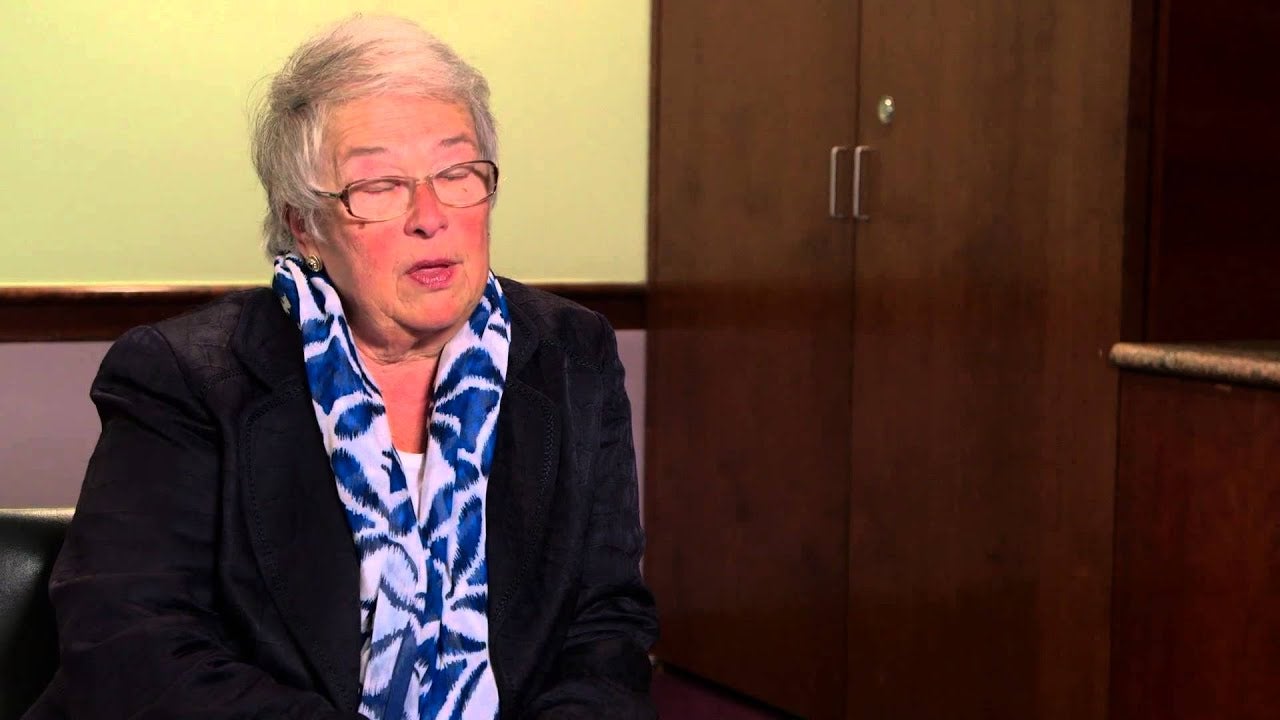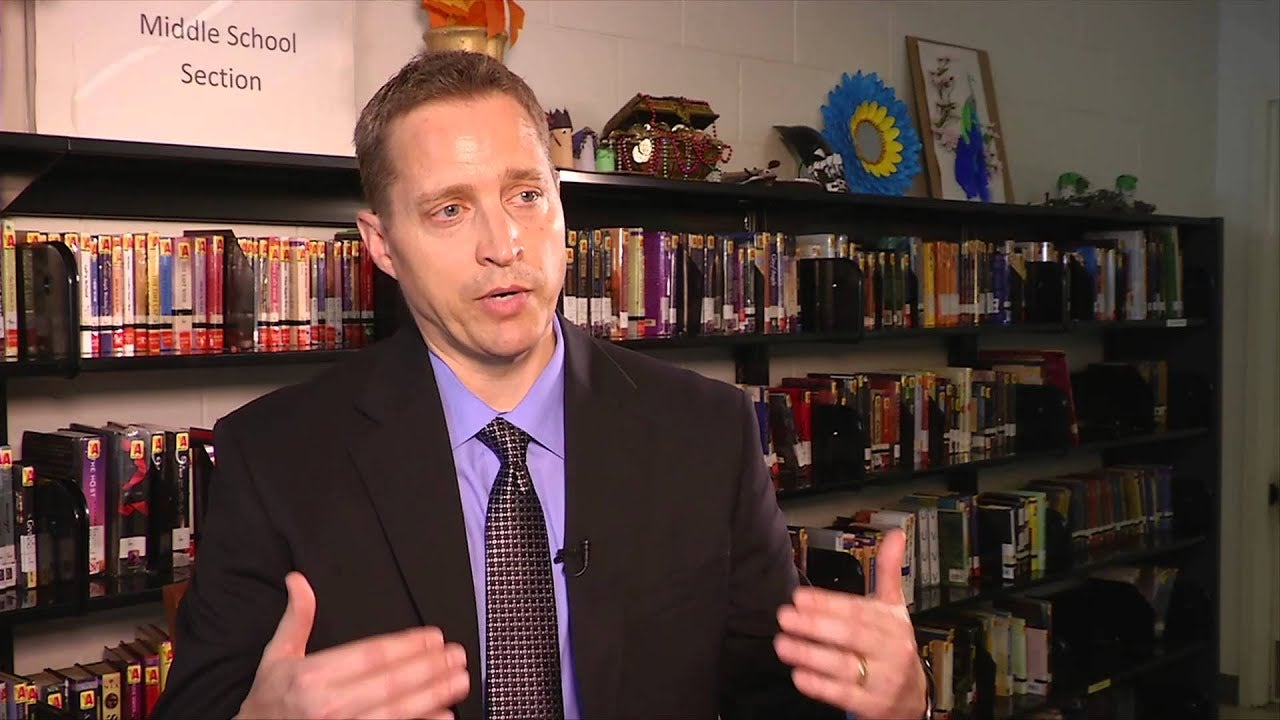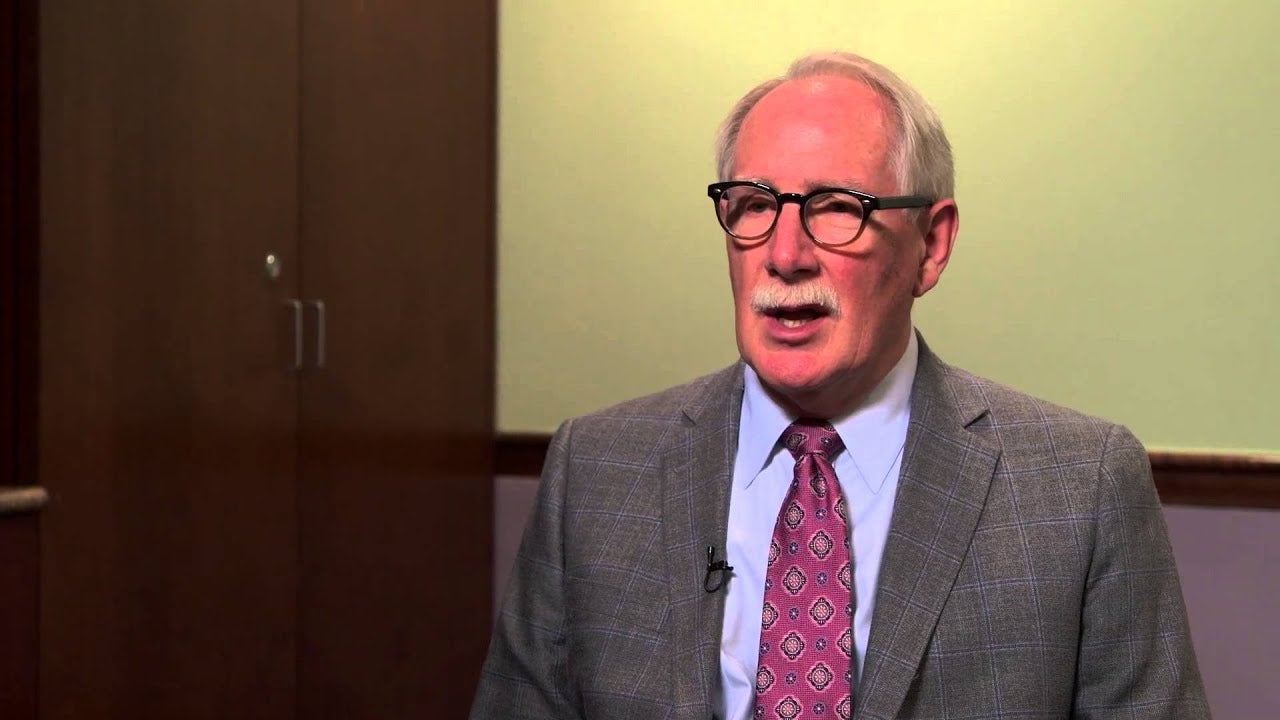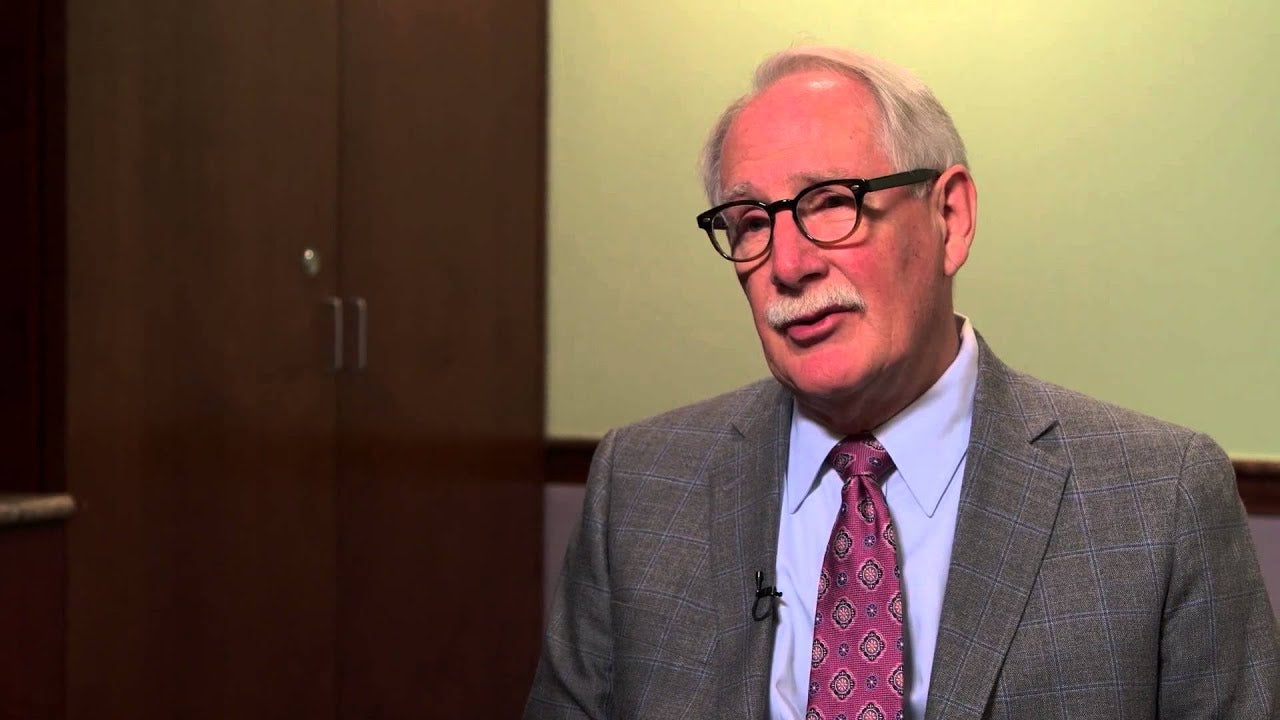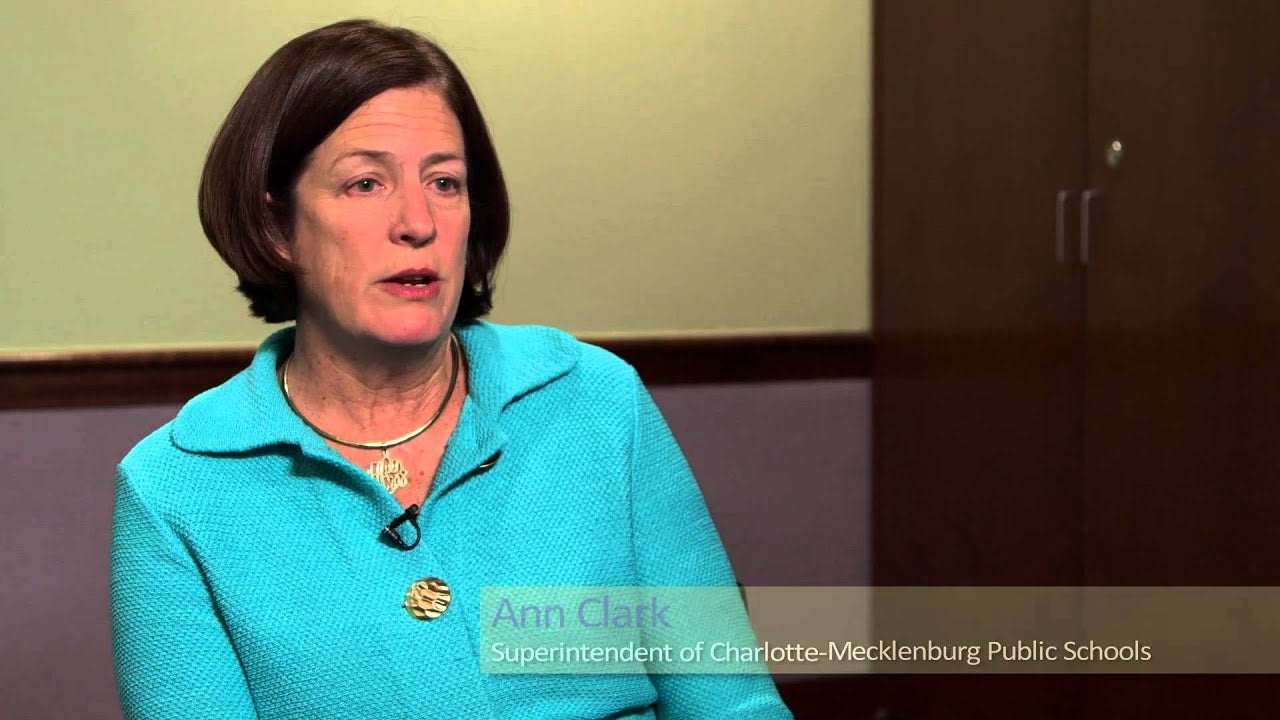Breadcrumb
- Wallace
- Reports
- Principal Pipelines A Feasible, ...
Principal Pipelines
A Feasible, Affordable, and Effective Way for Districts to Improve Schools

- Author(s)
- Susan M. Gates, Matthew D. Baird, Benjamin K. Master, and Emilio Chavez-Herrerias
- Publisher(s)
- RAND Corporation
- DOI Link
- https://doi.org/10.7249/RR2666
Summary
How we did this
The research involved several types of data collection and analysis. These included examination of district and state data on principals, schools, and students; interviews with district officials; and review of district expenditure reports. To estimate the effect of the pipeline effort, researchers compared changes in outcomes in roughly 500 pipeline district schools with changes in outcomes in more than 500 similar schools located in non-pipeline districts in the same state.
This groundbreaking report by RAND studied six large school districts that built “pipelines” to produce a large corps of effective school principals. The benefits for students were notable. Pipeline-district schools with newly placed principals outperformed comparison schools in other districts after three years. The difference in student achievement was more than 6 percentile points in reading and almost 3 percentile points in math. This is a statistically significant difference and an unusual accomplishment.
Principal turnover was also lower in pipeline schools after three years. Pipeline schools had nearly eight fewer losses for every 100 newly placed principals than the comparison group. This is significant because principal turnover is disruptive to schools and costly. Districts spend an estimated $75,000 to replace a principal.
Pipeline-building proved doable and relatively inexpensive for the six districts. This suggests that other large districts could also build pipelines with similar results. Districts spent about $42 per student per year on pipeline activities during the initiative. That amount was less than .5% of each district’s budget, on average.
Participating Districts
The Principal Pipeline Initiative was a six-year effort launched in 2011 and supported by The Wallace Foundation. The participating school districts were:
- Charlotte-Mecklenburg, N.C.
- Denver
- Gwinnett County, Ga.
- Hillsborough County, Fla.
- New York City
- Prince George’s County, Md.
Principal Pipeline Design
The principal pipelines had four major components:
- Rigorous standards that spell out what the district's principals are supposed to know and do. These standards guided all other pipeline components.
- High-quality pre-service training for assistant principals and principals. Each district ran a principal preparation program for its high-potential assistant principals. Each also partnered with one or more principal preparation programs.
- Selective hiring and placement. Districts required candidates to demonstrate practical competencies. They also created “leader tracking systems.” These are data systems to help districts make informed decisions about leader development and principal hiring, placement, and support. Data included employment history, ratings by teachers, ratings by supervisors, and student test scores at a principal’s current and previous schools.
- Apt on-the-job evaluation, and support. Novice principals received mentoring. A number of the districts strengthened the role of principal supervisors. Principals were evaluated based on the district’s leader standards.
These components worked together and reinforced each other. The researchers found that none of the individual components was more important than the others in getting results.
Exceptional, Widespread Impact
The Principal Pipeline Initiative had a larger average impact on student achievement than many other major initiatives after three or more years. In fact, the researchers found no other comprehensive district-wide initiatives that demonstrated as large an impact on student achievement.
The positive effects of the pipeline program were widespread:
- Elementary and middle school grades showed statistically significant benefits in math and reading. High schools showed positive effects in math.
- Schools that began in the lowest quartile on student achievement statewide showed strong, statistically significant benefits in math and reading.
An independent analysis looked at the rigor of the research. The idea was to see if it met evidence standards often needed for funding under Title I of the federal Every Student Succeeds Act. The analysis found that the research met those standards. The student achievement findings met what is known as the “Tier II” level of evidence. The principal retention findings met the “Tier III” level.
Key Takeaways
- Six large school districts built comprehensive pipelines to prepare and support new principals. The RAND Corporation studied their efforts and found that the pipeline approach used in the effort is a feasible, affordable, and effective way to improve schools.
- Participating districts successfully implemented the pipeline components. The key components were 1) rigorous standards for principal knowledge and performance; 2) high-quality preservice training; 3) selective hiring and placement; and 4) apt on-the-job evaluation and support. The districts also set up data systems with career information about current and aspiring principals. Most strengthened principal supervision.
- Pipeline-district schools with newly placed principals outperformed comparison schools in other districts after three years. The difference in student achievement was more than 6 percentile points in reading and almost 3 percentile points in math. This is a statistically significant difference.
- The researchers found no other comprehensive district-wide initiatives that demonstrated as large an impact on student achievement.
- Principal turnover was also lower in pipeline schools after three years. Pipeline schools had nearly eight fewer losses for every 100 newly placed principals than the comparison group.
Building a principal pipeline was relatively inexpensive. The amount was less than 0.5 percent of each district’s budget, on average.

We found no other comprehensive district-wide initiatives with demonstrated positive effects of this magnitude on achievement.
— Principal Pipelines: A Feasible, Affordable, and Effective Way for Districts to Improve Schools
Visualizations
Impact of the Principal Pipeline Initiative on Math and Reading
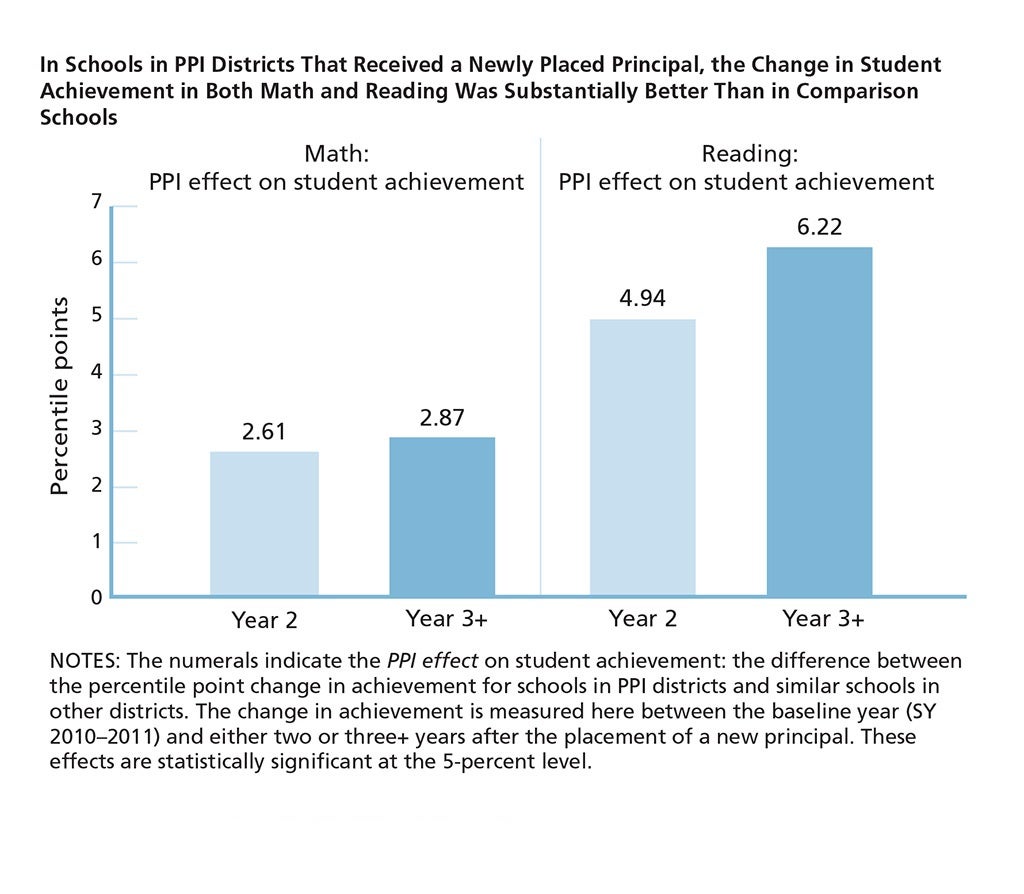
Related Reports
This independent review by Abt Associates finds the pipeline study meets evidence-of-effectiveness standards under ESSA, the Every Student Succeeds Act. Student achievement findings meet criteria for Tier II. Principal retention findings meet criteria for Tier III.
Related Articles
- Effective School Leaders Learn How to Solve Problems
- On-the-Job Support Helps New Principals Build Skills, Confidence
- Leader Standards Let Principals Know What to Strive For
- Hiring Approach Helps a District Match Principal to School
- Performance Reviews: A Tool to Develop High-Quality Principals
- What If Districts Focused on Retaining Principals, Too
Materials & Downloads
What We Don't Know
Among the unanswered questions are:
- How effective, feasible, and affordable would the pipeline approach be in smaller school districts?
- While the Principal Pipeline Initiative had the most impact on student achievement in the lowest performing schools, disparities in outcomes persisted by student demographics. How could pipelines be designed to support leaders to effectively close racial disparities in both opportunities and achievement for all students?

